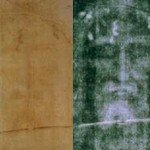
Almost every critic who read the wildly popular Twilight series by Stephenie Meyer seemed to pick up on Mormon themes, even when they weren’t there. Wild speculations about Mormon views on domesticity, feminism, romance, conversion, deification and even the Mountain Meadows massacre were delved into as curiosity or mockery. No matter what she did or said there seemed to be Mormon roots found by someone no matter how obscure or tedious. Even Orson Scott Card’s works were never scrutinized to the degree her works have been. What is amazing is that one of arguably the most prolific and popular Mormon writers has not been given the same treatment. This despite the fact his works are filled with nods and allusions to Mormon theology and culture.
Brandon Sanderson is best known for completing Robert Jordan’s massive fantasy series The Wheel of Time when that author died. He was given the task by Jordan’s wife after she read Sanderson’s own Mistborn fantasy trilogy of books. It was a good pick considering the final books became number one best sellers and how quickly he churns out whole series of thick tomes. He also teaches creative writing at Brigham Young University when not putting down words to pages.
Perhaps there are a few reasons Sanderson and Card don’t have scores of readers trying to pin down every Mormon reference real or imagined. For one thing, Meyer is a female writer who is Hollywood friendly. That means a capacity to reach out beyond the limited fan base of literate individuals to those who might not even open up a book. Someone once pointed out that television and movies are the modern popular literature, while books have nearly returned to the domain of a select (and self selecting) few. Perhaps that might explain why only the original Battlestar Galactica has come closest to the same nit-picking. Will the release of Ender’s Game open up Mr. Card, like it already has for a small group, to the same search for details and diatribes? Perhaps because Meyer is female, much like what occurred with J.K. Rowling to a lesser extent, she is considered an acceptable target.
Clearing the above musing out of the way, what Brandon Sanderson writes has Mormonism in it with some of it blatant. There are a few motifs shared by other Mormon writers, including Meyer’s vampire series. Examples here will include the Mistborn Trilogy and the currently stand alone Rithmatist novel. A routine warning is added that below might contain spoilers. Continue reading




